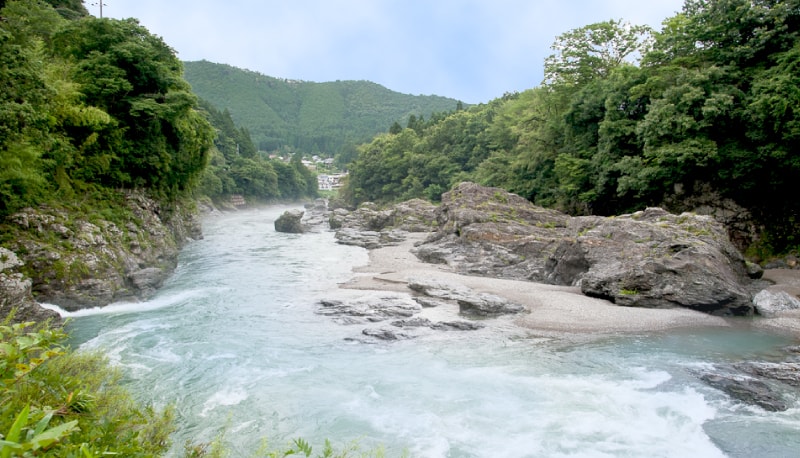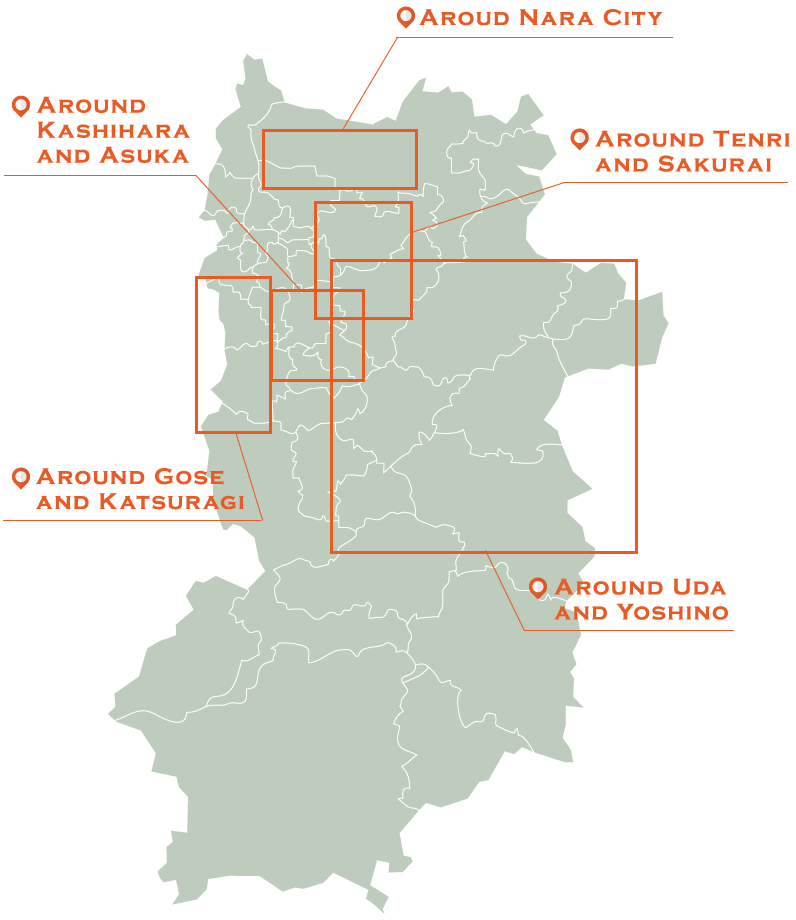



When Emperor Yuryaku made a royal visit to Yoshino, he met a beautiful maiden on the bank of Yoshino River. He married this maiden but returned to the palace, leaving her behind.
When he paid another visit to Yoshino, they met again. He had her dance for him. Because she danced so well, the Emperor sang a song for her.
Then he went off to the fields of Akizu near a waterfall. As he was hunting there, a horsefly bit him on the arm. Immediately, a dragonfly came and devoured the horsefly. The Emperor recorded this incident in a song as well.


Emperor Sujin sent Prince O-biko to subdue twelve provinces in the East. On the way, Prince O-biko met a girl on the hill of Herazaka, near Yamashiro (near present day Kyoto). She was singing a song:
Alas Mimaki-iri-biko
Little do you know that
They are plotting to take your life
Going around the back door
Going around the front door
Prince O-biko thought these lyrics were strange and reported them to the Emperor. The Emperor realized that the song was an omen that Prince Take-hani-yasu, his elder half-brother in Yamashiro, was planning to attack him.
The Emperor sent Prince O-biko with his army to attack first. They succeeded in defeating and killing Prince Take-hani-yasu.


Two young brothers, Prince Oke (who later became Emperor Ninken) and Prince Woke (who later became Emperor Kenzo), were living in the Province of Harima (in present day Hyogo Prefecture), hiding their identities because their father, Prince Ichinohe-no-oshiha, had been murdered by Prince O-hatsuse-wakatake (who later became Emperor Yuryaku).
One day, the new governor of Harima, Yamabe-no-otate, visited a housewarming celebration for a new dwelling where the young brothers were working to tend the fires. For entertainment, everyone took turns singing and dancing. When their turns came, the young brothers were unsure as to who should go first. Eventually, Prince Oke danced first, and then Prince Woke began to sing with his beautiful voice.
In his song, Prince Woke revealed that they were the children of the son of the Emperor. Astonished, Yamabe-no-otate fell out of his chair. Ordering everybody else to leave the room, he placed the two princes on his lap and wept for the tragedy that had befallen them.
Yamabe-no-otate had his people build a temporary palace for the princes to live in. The great news that the Emperor’s grandsons were alive soon reached their aunt, Lady Ii-doyo. She rejoiced and had them move to her palace.



Getting Around IN nara
Nara is about a 30-minute train ride from Kyoto or Osaka, and getting around in Nara is easy. Major tourist destinations are connected by Nara’s extensive public transportation system. Rental bicycles are also a popular way to find your way around.
Seirei no Taki Waterfall

Emperor Yuryaku sang a song about a dragonfly here. This waterfall has been a popular place to visit since ancient times. People enjoy the purifying sounds of the waterfall and the unspoiled nature of the Yoshino area. (Kawakami Village)
Hakusan Jinja Shrine

The precise location of the palace of Emperor Yuryaku has not been confirmed, but some say this shrine may have been built on its site. (Sakurai City)
Niukawakami Jinja Nakasha Shrine

A water deity is enshrined here. The shrine’s location is regarded as the sacred site where Emperor Jimmu conducted a ritual, following guidance he received in a dream. (Higashi Yoshino Village)
Mausoleum of Emperor Sujin

This mound is believed to be the tomb of Emperor Sujin, who is recorded in Kojiki as the first Emperor to establish a system of government in Japan. (Tenri City)
Rooftop of the Nara Prefecture Building

The rooftop of this building is open to the public and is regarded as one of the best locations to look out over the many historical sites in Nara, including Former Site of Heijyokyu(Heijokyo Palace), Todaiji Temple, and Mt. Katsuragi. (Nara City)
Nara Prefecture Complex of Man’yo Culture

This complex is a great place to learn about and research the culture of ancient Japan through interactive exhibits, theater presentations, and a variety of games. (Asuka)
Tsunosashi Jinja Shrine

Lady Ii-doyo, the aunt of the two princes who were discovered by Yamabe-no-odate, is enshrined here. Lady Ii-doyo was believed to have her own palace nearby.(Katsuragi City)
Tsubaichi

This area was a crossroads and a marketplace in ancient Japan where goods were exchanged under the Divine Tree. Many songs that appear in Kojiki stories are connected to this area. (Sakurai City)
Mausoleum of Lady Ii-doyo

Lady Ii-doyo is regarded by many as having been the unofficial interim leader of Japan between the reign of Emperor Seinei and the reign of Emperor Kenzo, who was one of her nephews. (Katsuragi City)
Mausoleum of Emperor Kenzo

Prince Woke, who had been in hiding along with his brother Prince Oke, eventually became Emperor Kenzo. This is his tomb. (Kashiba City)